Transplanting exisiting plants is a great way to make an instant garden and it’s a natural part of the reuse and recycle approach that I bring to all my garden designs. In this garden there were several overgrown evergreen foundation plants at the front door that could have been consigned to the compost pile as they needed to be removed to make way for a new house extension. But by transplanting them elsewhere in the garden I could create structure and enclosure without having to wait years for that required growth from new stock.
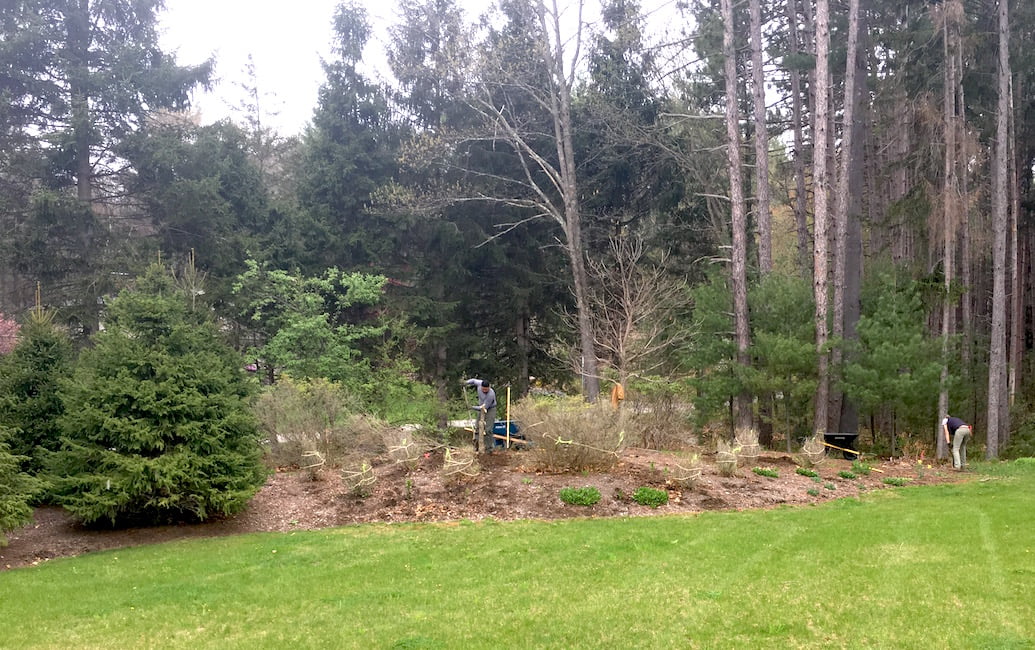
BEFORE – the Catalpa Knoll garden site. The crew is beginning to remove some existing deciduous shrubs
Transplanting makes both economic and environmental sense. You might be surprised to find that even quite mature evergreen shrubs and conifers, like old rhododendrons, azaleas, hydrangeas, arborvitae (Thuja) and spruce (Picea) can be dug and lifted and either replanted into their new spots that day or stored in-ground, root-pruned and tied, for later replanting. In this garden, both replanting and storage were the best options. By transplanting the arborvitae in the perimeter bed I could create the new instant garden but I also wanted to save several Picea for subsequent replanting. These perimeter trees were in the way of the access route from the side road for the heavy machinery that would excavate and level the area for the new front porch, so they had to be dug, lifted and temporarily moved out of the way.
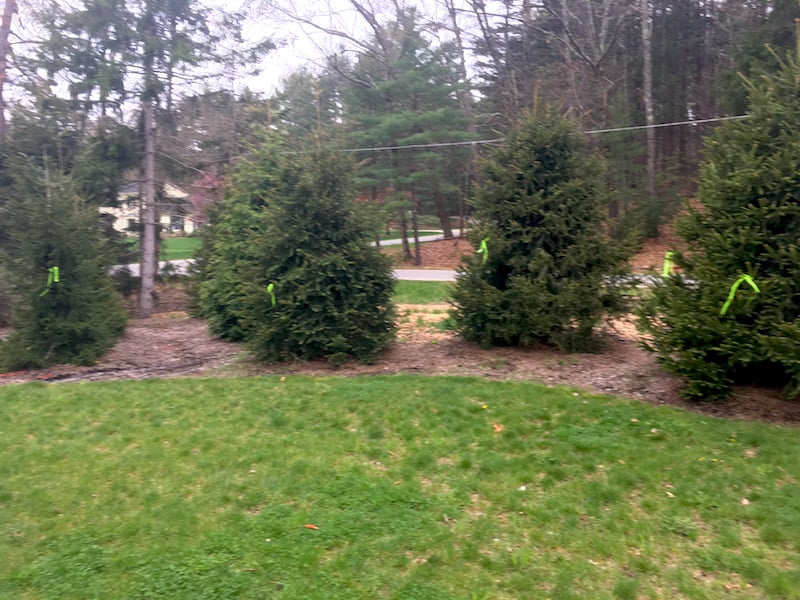
BEFORE – the marked spruce will be moved to make an access for construction and then replanted in position for the future fieldstone sitting wall
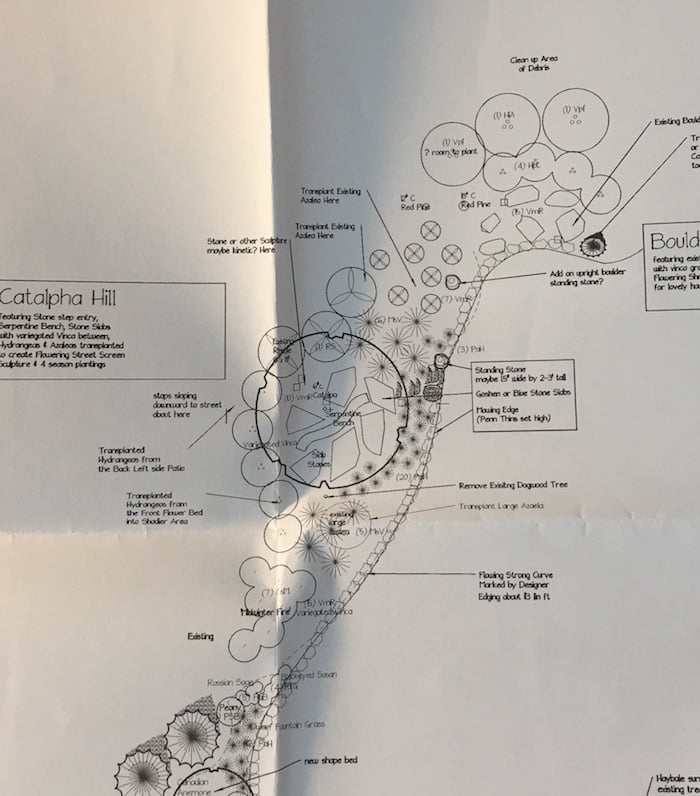
Plan for the Catalpa garden
The transplanting was done in the early spring while the shrubs were still relatively dormant and in time to catch the warming soils that would help them quickly re-establish.
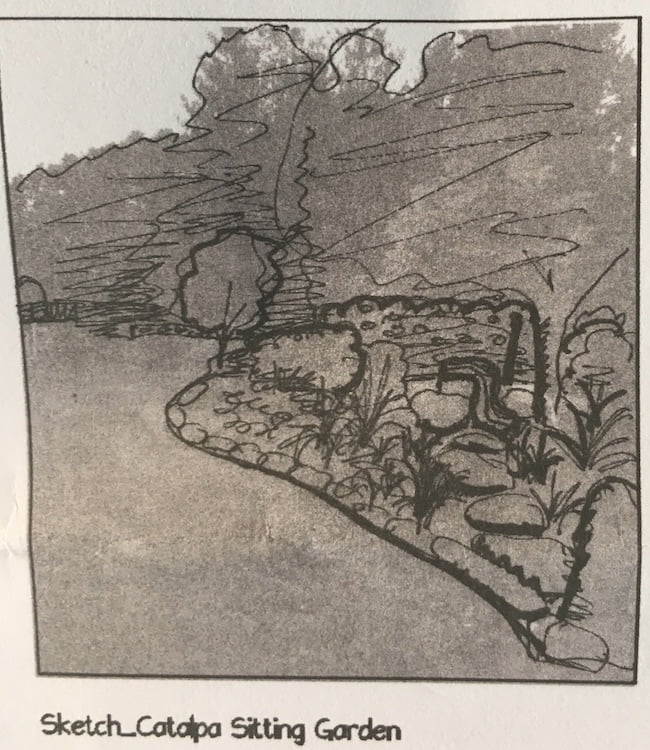
Sketch of the Catalpa Garden
Dubbed the ‘Catalpa Knoll Garden’ the new garden area surrounds a large Catalpa tree, the owners’ favorite tree. The evergreen ‘walls’ enclosing this new sitting area on the knoll are from the transplanted 6 foot (1.8m) tall (or more) rhododendrons and 14-16 foot arborvitae behind them. The texture of the arborvitae contrasts pleasingly with the rhodies and Catalpa. We also needed to grade and lower the soil level surrounding the Catalpa by about 6 inches (150mm) as it had been built up to higher than the flare of tree’s trunk at the base.
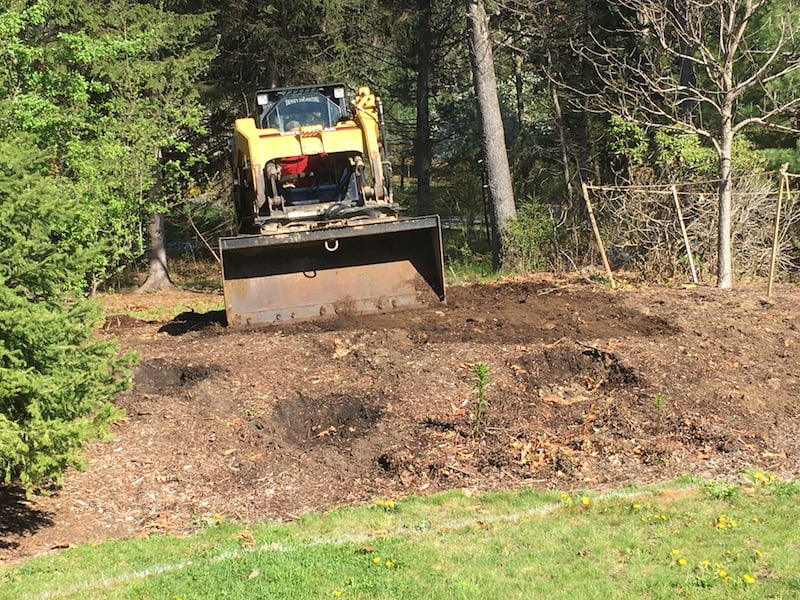
The existing plants have been removed and the soil level is lowered and regraded
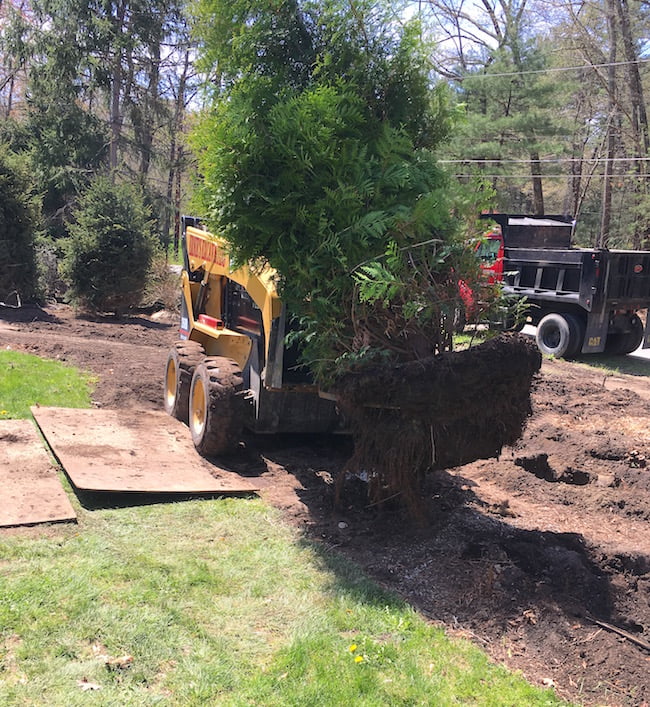
Transplanting large 14-16 ft arborvitae trees
Fortunately the arborvitae had only been in the ground in the perimeter bed for a few years so their root balls were relatively contained.
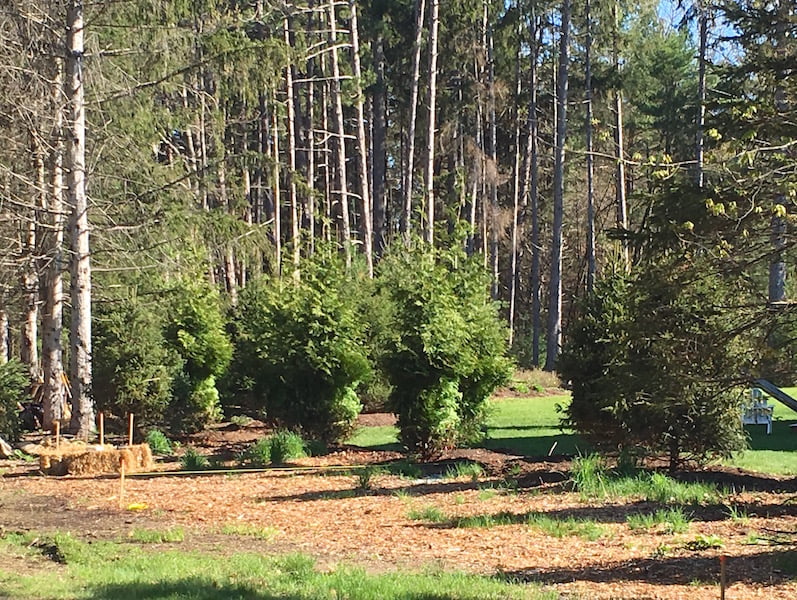
BEFORE – The perimeter bed. The arborvitaes are tied, root pruned and ready for transplanting
Once the new entry porch is completed, I’ll make a new front garden around it and reuse more of the extra plants that were moved for its construction, including two large azaleas to create a flowering screen, and several mature hydrangeas.
In the sitting garden, it will only take relatively few new small shrubs and groundcovers to reinforce the transplanted plants and…
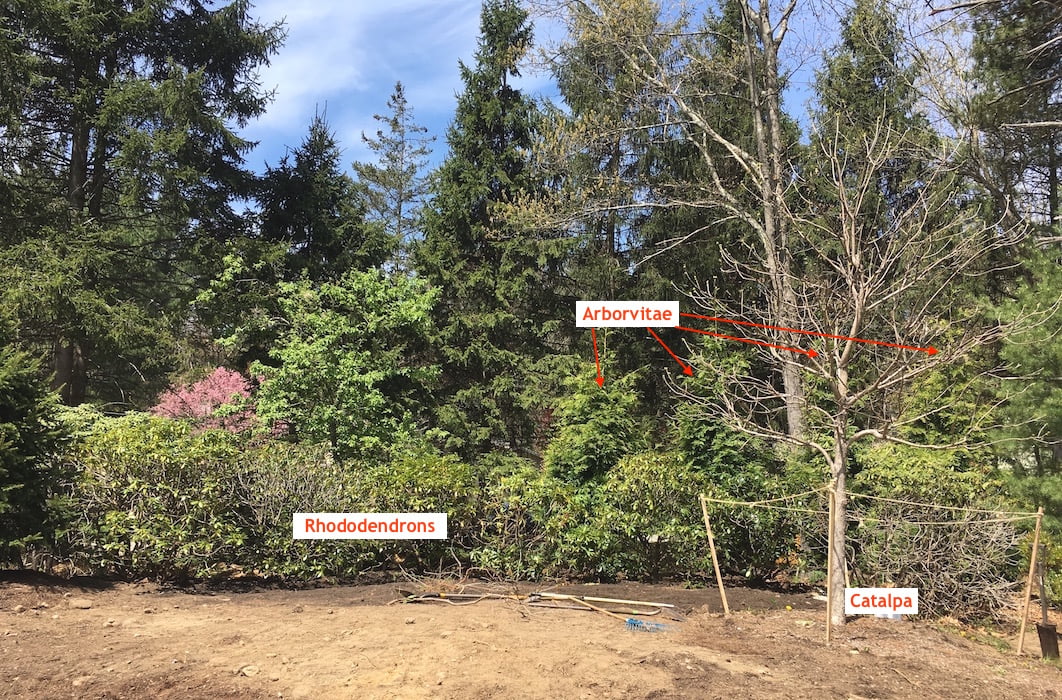
AFTER – the new Catalpa Knoll Garden, creating an instant ‘outdoor room’ with the enclosure of transplanted shrubs and conifers
Voila! The client has an instant but mature-feeling garden that will beckon them across the lawn to the new sitting area, as well as making a lovely view from the new porch.
